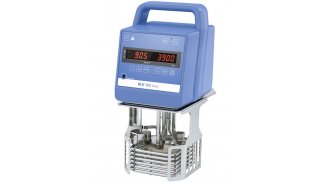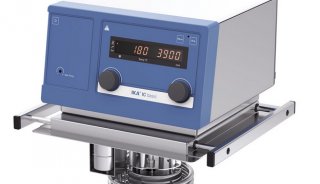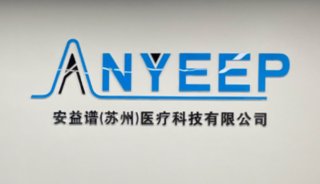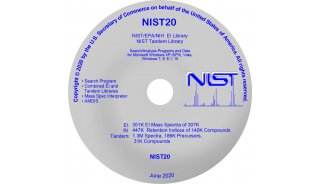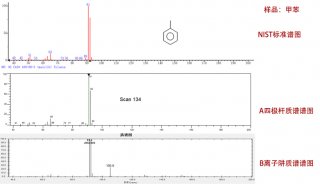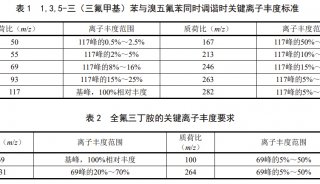Basic Theory and Use of GC-MS(一)
BASIC THEORY AND USE OF GC-MS
by
Dr. Eugenia Soboleva
Content
1. Introduction.
2. GC-MS systems and components.
3. Vacuum system
3.1. Rotary pump
3.2. Diffusion pump
3.3. Turbomolecular pump
4. Interfacing GC and MS
4.1. Packed column interfacing
4.2. Capillary column interfaces
4.3. Inlets for liquid chromatography
4.4. probe techniques
5. Ionizers.
5.1. Electron Impact Sources (EI)
5.2. Chemical Ionisation (CI)
5.3. Field ionization (FI)
5.4. Field desorption (FD)
5.5. Discharged Ion Secondary Ion MS (DISIMS) or Fast Atom Bombardment (FAB)
6. Principals of MS analysers.
6.1. Magnetic sector mass spectrometer
6.2. Double-Focusing Mass Spectrometer.
6.3.Quadrupole mass Spectrometer
6.4. Ion trap analyser.
6.5. Time of flight analyser.
6.6. Ion cyclotron resonance MS (Fourier-Transform Instrument).
7. Signal detectors
7.1. Discrete dynode electron multiplier.
7.2. Continues dynode electron multiplier.
7.3. Faraday cap.
8. Data recording.
8.1. Computer control of mass spectrometer and data acquisition.
8.2. Acquisition principles of HP quadruple mass spectrometer.
9. Tuning.
10. Qualitative determination by GC-MS.
10.1. Library searching.
10.2. User created library.
11. Basic rules for interpretation of mass spectrum.
11.1. Quasi-Equilibrium theory (QAT)
11.2. Inductive and mesomeric effects.
11.3. Isotope abundance
11.4. Nitrogen rule
12. Tandem mass spectrometry.
1. Introduction.
The combination of the gas chromatography with the mass-spectrometer has resulted in an instrument of considerable importance in the field of chemical analysis and detection. It could be argued that the mass spectrometer is just one of a range of detectors available to the gas chromatography user. On the other hand, some would say that the gas chromatograph is only one of many inlets that could be connected to the mass spectrometer. In truth, the synergy of this arrangement goes beyond the possibility of the two separate instruments and almost warrants a new definition as an instrument in its own right - GC-MS.
Advantages of GC-MS as a new technique in chemical analysis are:
* Qualitative analyses of unknown compounds;
* Conformation of molecular structure;
* High sensitivity and advanced selectivity.
Application areas of GC-MS include Chemistry, Biology, Medical science, Toxicology, Environmental science, Mineralogy, Semi-conduct technology, Archaeology, etc.
2. GC-MS systems and components.
The principal elements of GC/MS system are shown in Figure 1.
Figure 1. Block diagram of a typical GC/MS system.
The Gas Chromatograph introduces sample , solvent, and carrier gas to the MS.
The interface (Fig. 2) links the GC to the MS. It is used to remove excess carrier gas. The pressure requirement vary with MS instrument type and application, but 1.3*10-3 Pa is a typical maximum, and often lower pressure are necessary. The gas chromatograph, by contrast, basically operates at or above atmospheric pressure, and so it is not surpassing that some form of interface is required.
This usually acts as sample enrichment devise, extracting much of the carrier gas, although direct connection through tubing of a very fine bore is also possible. All the enrichment types reflect the need to compromise between the amount of sample lost and the amount of carrier gas extracted. In general, they are more efficient with a light gas, and so helium is favoured over nitrogen as the GC-MS carrier gas
Fig. 2. The interfacing between GC and MS
The Mass Spectrometer (Fig. 3) consists of ion source, mass analyser, and detector.
The ion source generates charged species and produces a collimated ion beam. Electron impact(EI), chemical ionisation(CI), fast atom bombardment(FAB), and some other types of ionisation techniques can be used. The mass analyser separates ions according to their mass and charge, sequentially passes just one m/z value. It can be magnetic, quadrupole, time of flight or ion cyclotron resonance. The detector is usually a multistage or continuous dynode electron multiplier. It measures the ion current that is passed by the mass analyser producing an analog signal as a function of mass.
Fig. 3. The schematic diagram from MS to detector.
The functions of the Data System (Fig. 4.) are to acquire and save data, to process data and generate reports, to monitor and/or control GC/MS hardware, to provide communications linkages. The interface operating at high frequency converts analog signal to digital data so as digital information to analog control signals. The computer hardware consists of central processor, memory, digital interfaces, disk and/or tape drive. The software comprised of master executive, acquisition and control programs, data processing package, and system diagnostics.
Fig. 4. The function of database system in MS.
3. Vacuum System.
A very high vacuum is essential element in the mass spectrometer for the following reasons:
* the mean free path of molecules in the system must be longer than the ion source. The mean free path is an average distance an ion travels before it strikes something. In a mass spectrometer, the mean free path must be long enough so that sample ions can travel from the ion source to the detector without colliding with other molecules;
* ion-molecular reactions start to occur as the pressure rises, producing change in fragmentation patterns;
* as a pressure rises, regulation of the electron current through the ion source becomes more difficult;
* high voltage breakdown may occur in the multiplier, source, or analyser if the pressure becomes too great;
* oxygen from residual air and leaks will cause filament burnout in the ion source;
* contamination of ion source components, slits or rods, and multipliers increases with higher pressure.
The international standard of measure for pressure in the SI system of units is the Pascal (Pa). Traditionally in high vacuum work the torr has been the base unit for measurement and it is still widely used. One torr is defined as the pressure required to support a column of mercury 1 mm hight. One torr equivalent to 133.332 Pa, or 1 Pa is equivalent to 7.5*10-3 torr. Atmospheric pressure varies with the weather, but for scientific purposes considered to be at 1.013*105 Pa (760 torr). At atmospheric pressure there are 1*1019 molecules per cubic centimetre. Each second, 3*1023 molecules hit each square centimetre of a container’s surface. The mean free path of each molecule is 6.5*10-8 m.
For a typical mass spectrometer with a path length of 500 mm, the pressure must be reduced to 1.3*10-2 Pa (10-4 torr) or less throughout mass spectrometer to prevent collisions. In practice, this means that the pressure must be about 10 times lowering the main pumping region to allow for pumping speed restrictions coursed by slits and lenses and to accommodate very long path lengths encountered in some instrument. Hence, typical analyser pressure limits are 3*10-3 Pa (2*10-5 torr) for quadrupole instruments and 3*10-4 Pa (2*10-6 torr) for magnetic instrument.
3.1. Rotary pump.
Rough pumping of the mass spectrometer is necessary before the very high vacuum pumping system is applied, whenever the instrument has been vented to the atmosphere. The vacuum usually provided by a rotary pump, typically in the range 1 to 10-3 torr. Sometimes it might be called as backing pump, foreline pump, or rough pump.
There are number of different types of rotary pumps. All use the same principle of tacking in a large volume of low-pressure gas and compressing it to a smaller volume by the action of rotating device. The most common type consists of a cylindrical rotor mounted eccentrically in a cylindrical chamber. (Fig.5)
Figure 5. Cross section of rotary vacuum pump.
Spring-loaded rotor blades are mounted diametrically through the rotor sealing against the inner surfaces of the chamber.
The rotor is turned by electrical motor. The rotor blades are free to move in and out of the rotor and will sweep out a varying volume as the pump is turned. The gas inlet port is connected to the point of largest enclosed volume. Gas is ejected through a spring-loaded flap valve, which prevent gas from re-entering the pump. The sealing is further improved by immersing the pumping assembly in an oil bath and allowing some of the oil into the pump chamber. This seals the small end gaps between the rotor blades and pumping chamber. The oil also serves as a lubricant.
3.2. Diffusion pump.
The diffusion pump moves gas from one area to another by establishing conditions in which the mean free path for molecules in one direction is greater than in the opposite direction. The diffusion pump consists of an enclosed chamber on which a stack of concentric jets are mounted. (Fig.6)
Figure 6. Cross section of diffusion pump.
A small charge of oil covers the bottom which is heated strongly. The oil boils vigorously producing a heavy vapour stream, which passes up the inside of the stack and out through the jets. These are angled downwards so that the escaping vapour produces a cloud of molecules moving rapidly towards the bottom of the pump. The outside of the pump is cooled by water jacket or cooling rings but sometimes by an air blower. The oil vapour is condensed and runs down to the bottom of the pump to repeat the cycle.
Any gas molecules that happen to diffuse into the pump will suddenly encounter a strong stream of particles moving predominantly downwards. Consequently, the gas molecules will be driven down to the lower part of the pump. A pressure difference up to five orders of magnitude can be developed across the pump. The diffusion pump can create an ultimate vacuum of about 10-5 - 10-8 torr with an outlet pressure of 10-3 torr. It is necessary for the diffusion pump to be backed with rotary pump, since it would be a number of problems without it:
the vapour jets would encounter such a large number of molecules that the flow would become turbulent and not downwards;
the oil would have to be heated much more strongly to achieve a sufficiently high boiling rate;
there would be sufficient oxidation of the oil and pump element.
3.3. Turbomolecular pump.
The pumping action of a turbomolecular pump is similar in some respects to that of a diffusion pump, in that the mean free path of gas molecules is greater in one preferred direction because of the gas molecule collisions with moving rotor blades. The gas is moved through the rotor assembly. Blades are angled to deflect gas molecules downwards towards the next set of blades and finally to the pump outlet (Fig.7) . As the gas pushed through the pump its pressures increased. If the pressure is increased to a point where the mean free path becomes small and a collision with another gas molecule rather then the rotor is more likely, then. The pumping action will cease. To prevent this the turbomolecular pump must be backed be rotary mechanical pump.
Figure 7. Cross section of turbomolecular pump.
The optional turbomolecular pump has a pumping capacity of 250 L/sec that limits the maximum GC column flow rate to <4 ml/min. This allows the use of GC columns up to 0.32 mm ID. Rotor speeds vary with type, but a typical unit will operate from 40,000 to 80,000 rpm. Consequently, the assembly must be very carefully balanced to prevent vibration.
4. Interfacing GC and MS.
The major difficulty in interfacing a GC and a MS is due to the great pressure difference between the system. A typical carrier gas flow rate for a packed column gas chromatography is 30 ml/min, and 0.5-2 ml/min for capillary columns. The MS operating pressure must be about 10-5 torr. A good interface allows the GC and the MS to operate at or near the optimum condition for each, yet it must also permit compounds from the GC to be transmitted to the MS without anomalous behaviour. For example, no loss in sensitivity, no reactivity, no alteration of the GC peak shape (Fig. 8).
Figure 8. Interfacing GC and MS.
4.1. Packed column interfaces.
For optimum system performance it is important that the excess carrier gas be removed but that the sample remain, so a gas-sample separator is required. The choice of gas is very important. Nitrogen gas has much lower pumping speed then the lighter gases such as helium and hydrogen. It is not removed so easily from the vacuum chamber by the pumping system and would be greater constrain on the separator performance. Helium being the most common because of safety consideration. It also has a low molecular weight. The sample molecules leaving the GC are one or two orders of magnitude heavier than helium. The diffusion rate for helium through porous materials is consequently much greater than that of the sample molecules.
The Watson-Bieman Effusion Separator (Fig. 9) consists of a sintered glass tube of ultrafine porosity through which the carrier gas effuses to be pumped away by an vacuum system. The remaining carrier, greatly enriched, passes through the separator to the MS ion source. A number of other materials can be used in place of the sintered glass tube, silver, stainless steel, and ceramic.
Fig. 9. The diagram of the Watson-Bieman interface. (Youl)
The membrane separator (Fig. 10) relies on the solubility of organic materials in a silicone polymer. The inert carrier gas has a very low solubility in the membrane material, and so the amount of helium reaching the ion source is small. The membrane separator consist of a chamber across which is stretched an extremely thin (0.025 mm) silicone membrane, which would be easily ruptured by the pressure differential across it if it were unsupported. A fine metal mesh of sintered glass screen is used for this purpose. The outlet for the excess carrier gas can be at atmospheric pressure. Sample yields to the MS is compound-dependent and may be as high as 60%.
Fig. 10. The diagram of permeable membrane interface. (Youl)
The Jet Separator (Fig. 11). The molecular weight difference between helium and the sample can also be used to advantage in jet separators, where momentum and diffusion rate are used to enrich the gas flow to the MS. The column effluent is forced through a fine jet into an evacuated enclosure. Opposite the first jet and only a very small distance from it is mounted a second jet. Under normal gas-chromatography flow conditions the gas will pass through the jets at near supersonic speeds. The heavy sample ions travel almost in a straight line from one jet to the other, but the lighter helium molecules, under the influence of the pressure differential, diffuse outwards. To achieve the required ion source pressures it is not uncommon to employ two stages of jets operating in series.
Fig. 11. The diagram of glass jet separator.
4.2 Capillary column interfaces.
In most respects, a Capillary Direct Interface is the best interface to use. Because compounds elute directly from the column into the ion source, there are no parts, gas flows, or voids to introduce artefacts into the analysis. In particular, the excellent peak shape resulting from the use of capillary columns is preserved when using Capillary Direct Interface. The entire sample elutes from the column into the source resulting in maximum sensitivity .
The disadvantages arise because the column is connected directly to the MS. This means that the column may not be changed without venting the system. Furthermore, only low-bleed columns with bonded cross-linked stationary phase may be used. If not, the stationary phase will bleed directly into the source coursing fast contamination, high background, and short intervals between cleanings. Flow rates in the range 0.5 to 2 ml/min for directly coupled capillary columns are too high for some mass spectrometer with electron impact sources (Table 1).
Table 1. Interface overview.
Column
ID (mm)
Typical Flow (ml/min)
Interface
Narrow Bore
0.1, 0.2, 0.25
0.1-1.0
Capillary Direct
Wide Bore
0.32
1-3
Splitters Jet Separator
Mega Bore
0.53
3-15
Splitters Jet Separator
Source pressure can be reduced to acceptable levels either by fitting a splitter or by modifying the source pumping characteristics.
There are some disadvantages associated with capillary splitter:
* sample utilisation is reduced by split ratio;
* some designs are mass-discriminating;
* split ration may change with increasing molecular weight of eluting compounds;
* dead volume (space within tubes and fittings where the gas flow is such that may be swirling, or mixing, or a delay in sample transfer) can cause significant peak broadening and tailing.
4.4 Probe techniques
The chemically pure compounds or purified components are able to be introduced to the MS with direct probe technique.
Solid probe: A solid sample is placed in a small glass, quartz or gold vial held in the end of the probe wand. The probe enters the vacuum system through a series of vacuum interlocks. Heating the probe causes the sample to evaporate into the ionizer ready for analyses.
Either EI or CI conditions might be used. Unfortunately, volatility under vacuum condition if often too great for adequate sample separation and the technique has limited use.
Desorption CI: The sample is flashed off a thin small wire loop mounted on the end of a direct-insertion probe straight into an ionising CI reagent gas within the ion source. Thermally labile compounds give strong spectra with little cracking and good molecular ions. Technique may be useful for non-volatile materials.
Pyrolysis: rapid heating rates up to 1000 C applied in this technique to produce thermal fragmentation. The sample not only evaporate into the ion source but also it is decomposed by the heat. It is used to analysed generally complex chemical samples or mixtures (polymers, bio-organisms).
5.Ionizers.
Before mass spectrometer can analyse a sample it is necessary that the sample molecule be ionised. After that the magnetic and electric field of the mass spectrometer interact with the charged molecules, separating ions of different mass-to-charge ratio. A number of techniques have been used to produce charged particles: electron impact(EI), chemical ionisation(CI), field sources, particle or high energy sources, fast atom bombardment(FAB). The most prominent type for GC/MS work is EI.
5.1 Electron Impact Sources
A cross section of a typical electron impact source is shown in Figure 13. Electrons produced from a heated filament wire are accelerated through a chamber where they undergo collision with the molecules of the gas to be analysed. The gas molecules ionised as a result of these collisions are drawn out of the ionisation chamber, focused, and injected into the mass analyser by a series of electrically charged plates.
Figure 13. Cross section of an electron impact ion source .
The filament is heated to red by passing a relatively large current through it. Electrons are released from the hot surface by thermal emission. The filament material is chosen to maximise the efficiency of this process. Rhenium, rhenium alloys, or uranium being most commonly used. The electrons are accelerated toward the ion volume by applying a voltage known as the electron energy voltage between it and the filament.
Some of the electrons enter the ionisation chamber, where they interact with any gas molecules coming either form GC/MS interface, probe inlet or other sample inlet. Collision take place, and the energy is transferred from the electrons to a gas molecules. If the electron energy is sufficient there is a high probability that some of the gas molecules will become excited enough to be ionised. If the electron energy is further increased, then the molecules can become so excited that they break apart, yielding a number of different types of fragments. The principal reaction is summarised is figure 14 by considering the effect of fast electrons on a hypothetical molecule ABC.
Figure 14. Electron Impact Ionisation Mechanism. The effect of a fast electron colliding with the hypothetical molecule ABC.
Due to electron-electron interaction, the molecules lose a bound electron. The resulting molecule is an ion and has a charge (usually +1), though ions with multiple charge do occur. The number of molecular ions initially formed depends on the energy of the incoming electrons, increasing with the electron energy. Above a certain value (about 50 eV), increasing the electron energy does not increase the amount of molecular ions formed. Fig. 15 shows a typical ionisation efficiency curve for positive ion formation, in which the energy of ionisation electrons (eV) is plotted against the number of ions produced (ionisation efficiency). The curve shows we would get the maximum yield of ions at approximately 50 eV. However, at that value we are very close to the steeply increasing part of the curve and thus any small unintentional experimental decrease in beam energy would lead to a dramatic reduction in ionisation efficiency. If we increase the operational beam energy to 70 eV, we sacrifice only a small amount in ionisation efficiency, but move well into plateau region, where small changes in beam energy have little effect on ionisation. For this reason electron impact mass spectra are usually recorded at 70 eV.
Figure 15. A typical Ionisation Efficiency Curve.
A spectrum recorded with a beam energy set at or about the value of the ionisation
potential will show the presence of only molecular ions. Fragmentation only becomes important at higher electron beam energies. The spectra recorded at different eV are shown in Fig. 16.
Figure 16A. Mass spectra at various electron energies.
Electron impact ionisation is the most widely used method of ionisation in mass spectrometry because for most molecules it produces both molecular and fragment ions. Thus, it allowed determination of both relative molecular mass and molecular structure.
Usually, most structural information is gained when the maximum number of fragment ions are produced. But there considerable number of molecules for which all or almost all the molecular ions formed fragment before they leave the ion source. For this type of molecule it is difficult to determine their molecular mass.
Most organic compound give more positive than negative ions when ionisation occurs under EI conditions. In the traditional GC/MS system which examine positive ion beam it is necessary to remove the slow electrons and excess fast electrons from the ion volume. A plate with a small positive potential relative to the ion volume is used to mop up these electrons. It is usually called electron collector or trap. It is mounted just outside the ion volume on the side opposite the filament.
The electron beam is focused into the ion volume by the use of a filament reflector. A metal reflector plate is positioned behind the filament and is electrically connected to it. Electrons leaving the filament will be repelled from the reflector.
For positive ions detection the ion volume is normally held at positive voltage with respect to the ground. This is referred as a ion energy voltage. Some sources have a small repeller plate mounted inside the volume. This normally has a small positive voltage with respect to the ion volume and causes the positive ions to be pushed out from it. The ions formed inside the source will adopt the same potential as in the ion volume. Passing from the ion volume toward grounded exit causes the ions to lose potential energy and to gain kinetic energy. A series of charged plates between the ion volume and the exit plate improve the ion extraction and limit the angular spread of the emerging ion beam, so they act as a lens, focusing the ion beam. It is for this reason they called lens plate, but the plate nearest to the ion volume called the extractor. (Fig. 13)
For negative ion work the ion energy, lens, extractor, end repeller voltage must be reversed in polarity. Negative ion work is more common with chemical ionisation sources.
There are several drawbacks of electron impact ionisation:
* It may be difficult to measure relative molecular masses for molecules sensitive for fragmentation;
* it is difficult to distinguish between isomers;
* some compounds may undergo thermal decomposition prior to ionisation or be very inclined to fragmentation after ionisation because of the temperature required for vaporisation;
* others may simply be too involatile to give a spectrum.
When this problems are occur, recourse must be made to alternative methods of ionisation.
5.2 Chemical ionisation (CI)
In Chemical Ionisation the sample molecule is surrounded by reactive reagent ions and charge is passed to the molecule by a chemical interaction without much energy transfer. Reagent gas is mixed in the ion volume of the CI source with sample gas stream. The reagent gas pressure is about 1 torr. The majority of ions are formed from the reagent gas, which is ionised initially by electron impact. This ions may combine with themselves or neutral reagent gas molecules to form the reactive plasma. This can be illustrated by considering the reactions that occur when methane is used as a reagent gas.
- Primary electron impact reaction:
CH4 e CH4+,CH3+, CH2+, CH+, C+, H2+, H+
- In the relatively high pressure of the CI source, typically 0.5 to 1 torr, a series of secondary reactions occur:
CH4+ + CH4 ? CH5+ + CH3
CH3+ + CH4 ? C2H5+ + H2
CH2+ + CH4 ? C2H3+ + H2 +H
- Tertiary ion-molecular reactions occur when some of the reaction products will further react with uncharged methane:
C2H3+ + CH4 ? C3H5+ + H2
(C2H2+ + CH4)n ? polymers
All these reactions and others not listed occur at the same time. The most prominent ions formed, accounting for approximately 95 % of the total ionisation are marked in bold (see above). They are extremely reactive and may attack the sample molecules, passing charge to them. Furthermore, proton or even the whole reagent ion may become attached to the sample molecule giving (M+1)+, (M+29)+, and (M+41)+ ions. Often the protonated and additional ions have greater stability than molecular ions formed in the EI mode, so that positive identification of molecular weight may be possible with CI even where there is no molecular ion under EI condition.
Reagent ion-molecular reactions are given bellow:
* Proton transfer
XYZ + CH5+ ? (XYZ+H)+ + CH4 (M+1)
* Hydride transfer
XYZ + C2H5+ ? (XYZ-H)+ + C2H6 (M-1)
* Additional reaction
XYZ + C2H5+ ? (XYZ+C2H5)+ (M+29)
XYZ + C3H5+ ? (XYZ+C3H5)+ (M+41)
* Additional and dissociation (neutral loss)
XYZ + CH5+ ? (XYZ+H)+ ? XY+ + HZ
Z=OH, SH, etc.
Reagent gas selection.
A number of different substances can be used in CI. The most typical compounds and their common ions are given in table 1.
Table 1. Predominant ions at pressure about 1 torr.
Reagent gas
Ions
Methane
CH5+, C2H5+, C3H5+
Propane
C3H7+, C3H8+
Iso-butane
C4H9+
Hydrogen
H3+
Ammonia
NH4+, (NH3)2H+, (NH3)3H+
Water
H3O+
Tetramethylsilane
(CH3)3Si+
Dimethylamine
(CH3)2NH2+, [(CH3)3NH]2H+, C3H8N+







